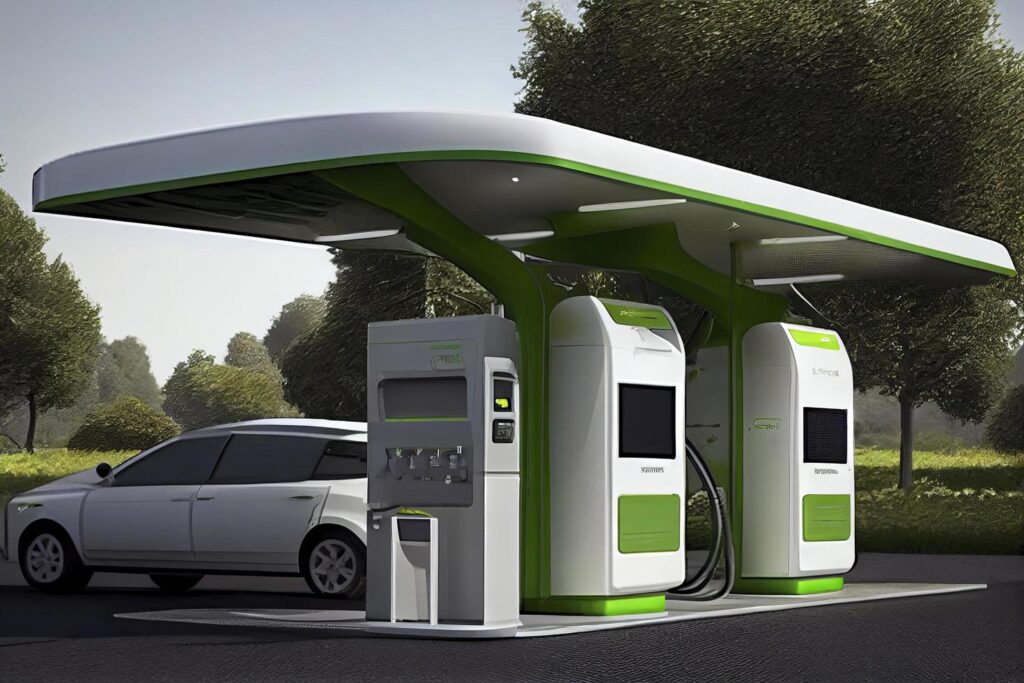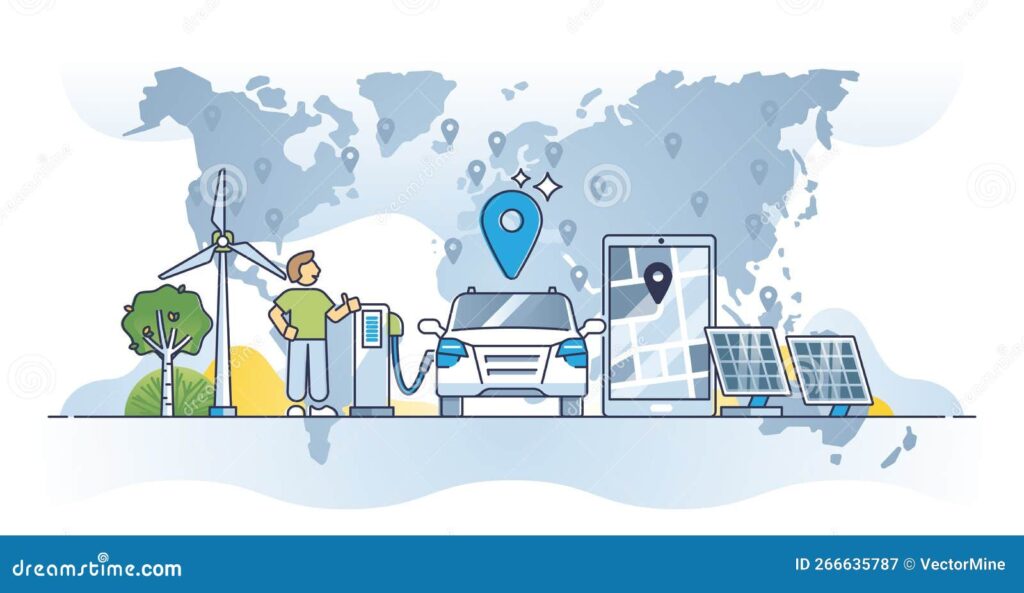Global EV Revolution: Navigating the Expanding Landscape of Electric Vehicle Charging Points in 2024.
Navigating the Expanding Landscape of Electric Vehicle Charging Points In 2024, the world is witnessing a monumental shift towards electric mobility, and the backbone of this transformation is the rapidly expanding network of electric vehicle (EV) charging points. This comprehensive guide explores the current state of the global EV charging infrastructure, offering readers an insightful journey into the various charging networks that are shaping the landscape.
From the bustling streets of urban metropolises to the remote highways connecting continents, electric vehicle charging stations have become integral to the sustainable transportation revolution. This article delves into the latest trends, technologies, and geographical spread of charging points, providing a roadmap for EV enthusiasts and travelers alike.
Discover the top players in the industry, such as Tesla’s Supercharger network, ChargePoint, and Electrify America, and understand how they contribute to the seamless integration of EVs into our daily lives. The guide also explores the impact of international collaborations and government initiatives, shedding light on the policies that are propelling the global expansion of EV infrastructure.
Whether you’re planning a cross-country road trip or simply curious about the state of EV charging on a global scale, “Global EV Revolution: Navigating the Expanding Landscape of Electric Vehicle Charging Points in 2024” is your go-to resource. Stay ahead of the curve and embrace the future of sustainable transportation by understanding the intricacies of the world’s EV charging network.
The electric vehicle (EV) revolution is in full swing, fueled by environmental concerns, technological advancements, and government incentives. As EV adoption surges, one critical aspect demanding attention is the infrastructure for electric vehicle charging points.
2024 promises to be a pivotal year for EV charging infrastructure, with rapid expansion and evolving technologies shaping the landscape. Here’s a glimpse into what you can expect:

Exponential Growth:
- The global EV charging point market is estimated to reach USD 162.6 billion by 2027, growing at a compound annual growth rate (CAGR) of 27.4% from 2022 to 2027.
- China leads the charge with the world’s largest charging network, followed by Europe and the United States. India is also witnessing significant growth, with the government aiming for 5 million charging points by 2030.
Technological Advancements:
- Fast-charging technologies like DC fast chargers and superchargers are becoming increasingly common, reducing charging times significantly.
- Smart charging solutions are optimizing energy usage and grid stability, integrating EVs into the power grid seamlessly.
- Wireless charging technology is in its nascent stages but holds immense potential for convenient and effortless charging.
Diversification of the Landscape:
- Home charging remains the most popular option, with Level 2 chargers gaining traction for faster charging at home.
- Public charging networks are expanding rapidly, with a focus on convenient locations like highways, parking lots, and even workplaces.
- Private charging solutions are emerging, with businesses and apartment complexes offering charging facilities for their customers or residents.
Challenges and Opportunities:
- Standardization of charging connectors and protocols remains a challenge, hindering interoperability across different brands and regions.
- Grid infrastructure upgrades are crucial to accommodate the increased demand for electricity from EVs.
- Ensuring equitable access to charging infrastructure, especially in rural areas and developing countries, is essential for inclusive EV adoption.
Navigating the Landscape:
- EV drivers can utilize apps and online platforms to locate charging stations, plan their trips, and even reserve charging slots.
- Governments can play a crucial role by implementing supportive policies, providing subsidies for charging infrastructure, and investing in grid modernization.
- Private sector players have immense opportunities to invest in charging networks, develop innovative charging solutions, and partner with governments and utilities.
In conclusion, 2024 is poised to be a year of significant progress in the global EV charging landscape. Embracing the rapid growth, technological advancements, and diverse solutions will be key to unlocking the full potential of the EV revolution and ensuring a sustainable transportation future.
As a resident of Roorkee, Uttarakhand, India, you can expect to see an increasing number of EV charging points in your city in the coming year. The government’s ambitious plans for EV adoption, coupled with private sector initiatives, are likely to accelerate the rollout of charging infrastructure. You can stay updated on the latest developments through government websites, news articles, and EV-focused online platforms.
I hope this comprehensive overview provides you with valuable insights into the exciting world of EV charging in 2024. Feel free to ask any further questions you may have about this rapidly evolving landscape.
India’s Electric Vehicle Charging Roadmap: Plugging into the Future

India’s electric vehicle (EV) revolution is gaining momentum, fueled by ambitious government targets, falling battery costs, and a growing awareness of environmental concerns. To support this surge in EV adoption, a robust charging infrastructure is crucial. Here’s a look at India’s roadmap for expanding its EV charging network:

Government Ambitions:
- The Indian government aims for 30% of all vehicle sales to be electric by 2030, requiring a massive boost in charging infrastructure.
- Initiatives like the Faster Adoption and Manufacturing of Hybrid and Electric Vehicles (FAME-II) scheme provide financial incentives for setting up charging stations.
- The government is also focusing on creating EV charging clusters along major highways and in urban areas.
Rapid Expansion:
- The number of EV charging stations in India is growing rapidly, with over 2,000 operational stations as of January 2024.
- This number is expected to reach 5 million by 2030, making India one of the world’s largest EV charging markets.
- The focus is on installing a mix of AC chargers for home and office use and DC fast chargers for public stations, catering to different needs and driving ranges.
Focus on Diversity:
- Public charging stations are being set up at strategic locations like highways, petrol pumps, parking lots, and even metro stations.
- Private charging solutions are also emerging, with businesses and apartment complexes offering charging facilities for their customers or residents.
- Home charging remains a popular option, with Level 2 chargers gaining traction for faster charging at home.
Challenges and Opportunities:
- Standardization of charging connectors is crucial for seamless interoperability across different brands and regions.
- Upgrading grid infrastructure is essential to handle the increased demand for electricity from EVs.
- Ensuring equitable access to charging infrastructure, especially in rural areas, is vital for inclusive EV adoption.
Navigating the Landscape:

- EV drivers can utilize mobile apps and online platforms to locate charging stations, plan their trips, and even reserve charging slots.
- Government websites and news articles provide updates on the latest developments in the EV charging infrastructure rollout.
- Private companies and startups are actively involved in developing innovative charging solutions and expanding the network.
The future of EV charging in India is bright, with rapid expansion, technological advancements, and diverse solutions driving the journey. By addressing the challenges and capitalizing on the opportunities, India can ensure a smooth transition to a sustainable electric mobility future.
I hope this information, along with the visuals, provides you with a clearer picture of India’s roadmap for EV charging infrastructure. Feel free to ask any further questions you may have about this exciting sector!
